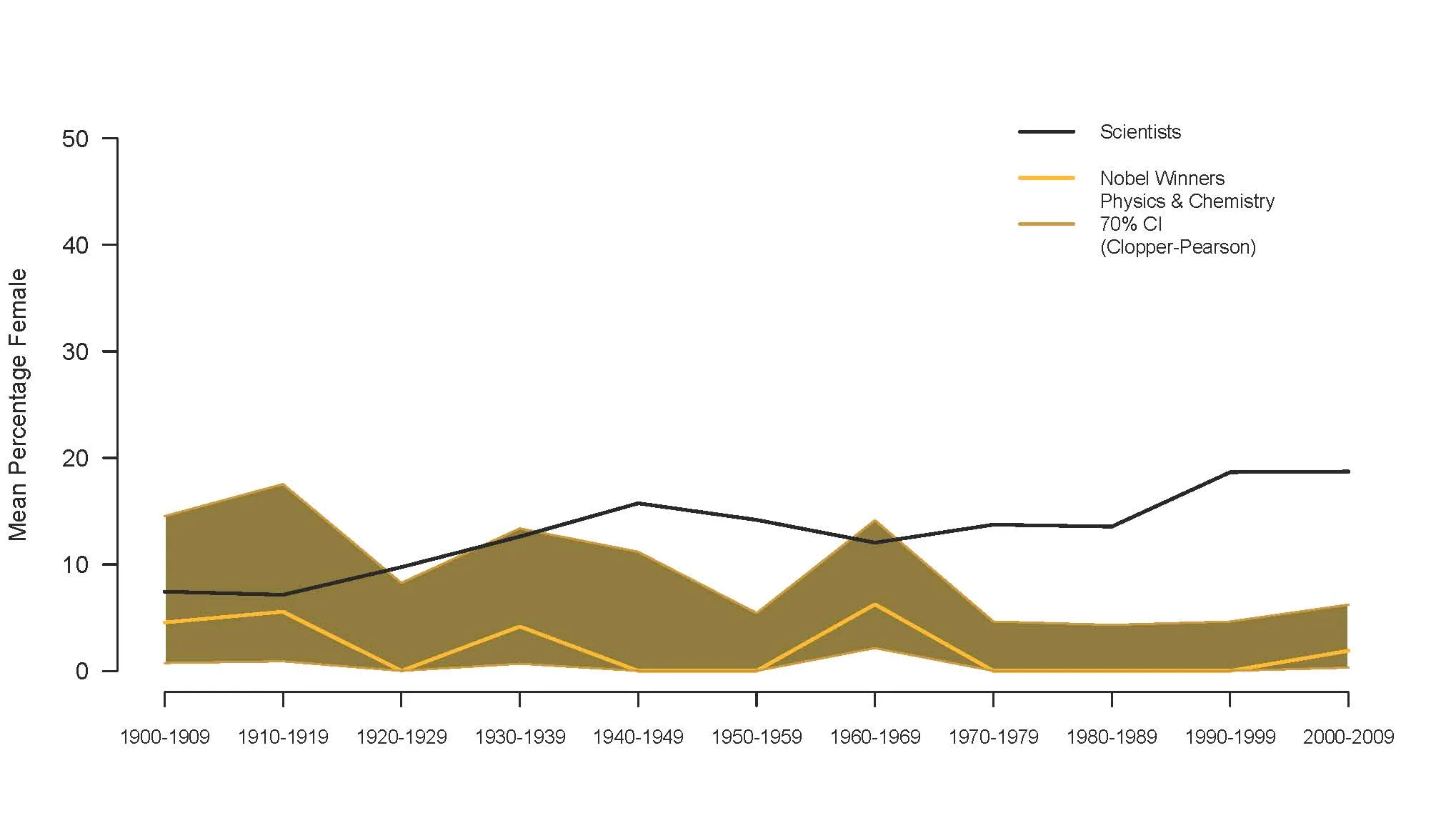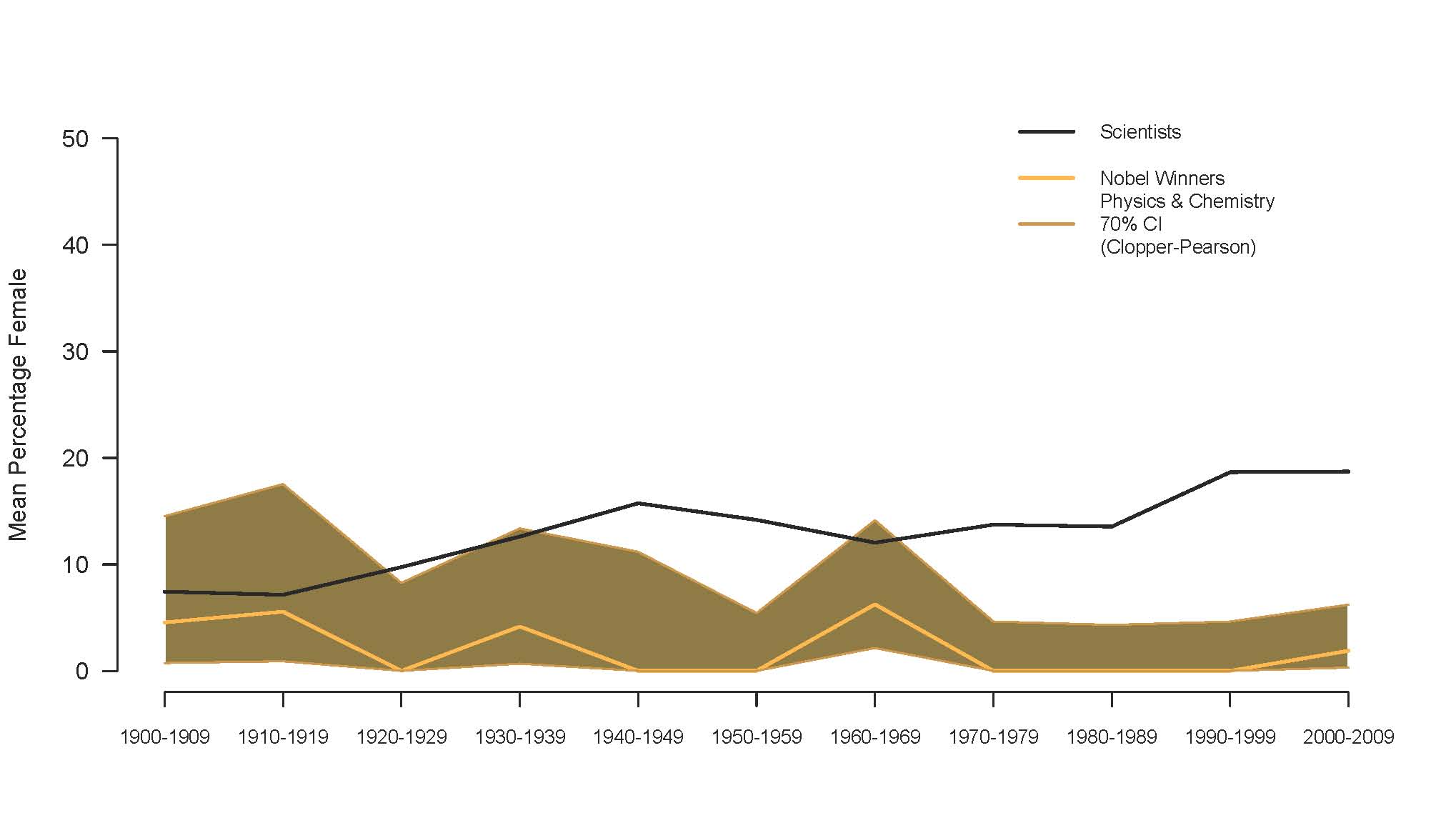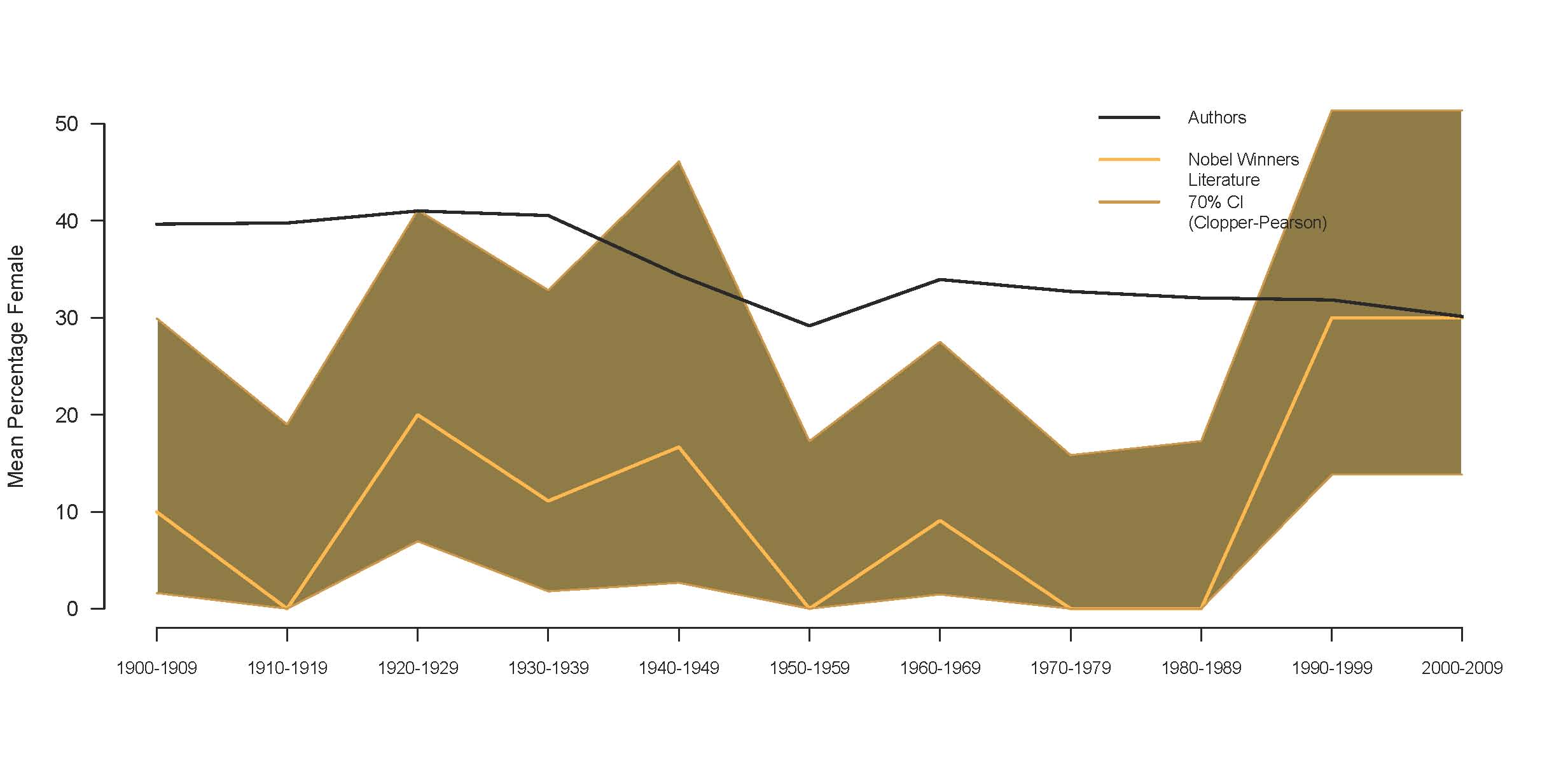If, in the early 20th century, there was a general belief that women were less capable of doing valuable scientific work than men, the quantity and impact of Marie Curie's research provided a strong counterargument. Some feminist historians have seen Curie's accomplishments as a symptom of the excessive demands women scientists faced throughout history; her extraordinary contributions, they argue, demonstrate that female scientists have generally been held to a higher standard than their male colleagues; women scientists have gained general acceptance only after above-average performance (McGrayne 2001, Wyer 2001). To support these claims, historians often return to the Nobel and highlight statistics suggestive of gender disparities in how the committee has recognized scientific achievement in the past. Over the 109 years of the Nobel's history, only 16 women have been acknowledged in the science categories (2 in Physics, 4 in Chemistry, and 10 in Medicine). Of these 16, 9 (56%) received the honor after 1980. Feminist readings of these figures conclude that the Nobel committee has largely neglected the contributions of women in science during the 20th century, with the gender gap narrowing only in recent decades.
Having raised the issue of gender politics, statistically-minded readers might recall that it was 40 years after Curie's second Nobel that Simpson published a paper describing a curious phenomenon in association analysis. The phenomenon, which came to be known as Simpson's paradox, occurs when an overall association between two categorical variables, female gender and Nobel recipient, for example, have no, or even a reverse, association when assessed within subgroups defined by a third factor. This statistical artifact was famously demonstrated in a case of suspected gender discrimination against female students applying to graduate school. The case study is relevant to the present discussion in more than its subject matter because it reveals a fundamental flaw in standard feminist readings of the Nobel data.
In the 1970s, an investigation of the admission rates to graduate programs at the University of California Berkeley (UCB) showed an overall significantly lower probability of admission for female applicants than male applicants. This led to the suspicion of pervasive bias in the admissions process whereby qualified female candidates were being systematically excluded from graduate study on the basis of their sex. Further analysis revealed a more complex story. When the association between gender and application acceptance was analyzed by department, it was found that the overall association in favor of males was, for the most part, an artifact of Simpson's paradox. The department-by-department assessment was not a story of gender bias but of an ambitious pool of female applicants who, in contrast to their more laid-back male peers, were disproportionally vying for spots in the most competitive programs. Had the interplay between gender, program preference and selectivity been overlooked, it might have resulted in an erroneous accusation of University-wide sex discrimination.
Judgments about the Nobel data that look only at the award counts make a similar mistake as the initial analysis of the Berkeley admissions data. The overall low acceptance rate for the female applicants to UCB would have only been evidence of bias if an equal proportion of male and female applicants were applying to each department. Similarly, the paucity of Nobel awardees would only be surprising if it was inconsistent with the proportion of women among eligible candidates, in this case, professional scientists.
Figure 1. Female proportion of Nobel Prize winners in science compared to proportion of women scientists
To accurately address the hypothesis that science done by women has been persistently devalued in the past century, we need to consider trends in the representation of women among active scientists. To do this, I randomly sampled general science articles from the JSTOR database and determined the proportion of male contributing authors for each decade of the past 110 years. Taking into account the gender distribution of professional scientists with this method, the Nobel data tell a quite different story than the simple counts would suggest. For a selection process that is not influenced by a candidate's gender, the proportion of female Nobel winners should be comparable to the proportion of working women scientists. This was the case up to the 1970s (Figure 1), with a possible discrepancy in the decade following WWII, which could reflect a voting committee heavily influenced by the political climate of the time (for more on this topic, see Danny Dorling's article in the September 2010 issue (7.3) of Significance).
More recently, a gender gap has emerged as the number of female recipients has declined while the growth of women in the scientific profession has risen. The evidence suggests that, in the first half of the 20th century, qualified women were struggling to enter the scientific profession but those who broke through were as valued as their male colleagues. In more recent decades, the increasing rate of entry into the professional field reflects the victories won in combating barriers to a career in science (For a recent popular text on these changes see The Madame Curie Complex). Yet the widening gender gap for Nobel nods suggests that the average professional impact among the growing segment of women scientists, as a consequence of discriminatory or other factors, might not be keeping pace.
Figure 2. Female proportion of Nobel Prize winners in Literature compared to proportion of female authors
Interestingly, the standard feminist reading of the Nobel awards in science is a better description of the trends for the Literature category (Figure 2). Based on the ratio of female to male bestselling novelists, as tabulated by Publisher's Weekly, women have held a nearly even place (40%) among professional writers in the 20th century. Despite this, the decennial proportion of female Nobel recipients has only begun to approach this level in the past two decades. Before the 1990s the percentage of female prize winners in literature was 7%, an astonishing difference of over 30%. Women writers have good reason to protest against the Nobel foundation for routinely neglecting the merits of their work.
Of course, what Nobel Prize trends say about the general opinion of the prize's respective fields is as mysterious as the foundation's voting process. But the even greater mystery, in the admittedly prejudiced opinion of this author, is why the Nobel committee, in its near-110 year history, has yet to name a Laureate in statistics.
- Stephanie Kovalchik is a statistician at the RAND Corporation, a policy think tank located in Santa Monica, California. Her research focuses on the use of prediction and risk assessment models to improve the delivery of health and social services.
References
- Bickel, P., Hammel, E. A., O'Connell, J.W. (1975), Sex Bias in Graduate Admissions: Data from Berkeley, Science, 187, 398-404.
- Jardins, Julie Des (2010). The Madame Curie Complex: The Hidden History of Women in Science, Feminist Press.
- McGrayne, Sharon Bertsch (2001). Nobel Prize Women in Science: Their Lives, Struggles and Momentous Discoveries, National Academy Press.
- Simpson, E. H. (1951), The Interpretation of Interaction in Contingency Tables, Journal of the Royal Statistical Society, Ser. B, 13, 238-241.
- Wyer, Mary (2001). Women, Science, and Technology: A Reader in Feminist Science Studies, Routledge.






